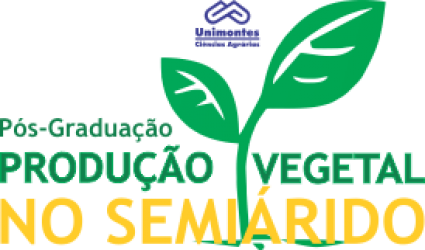- Version
- Download 0
- File Size 1.29 MB
- Create Date 14/06/2021
- Download
AZEVEDO, Verbenes Fernandes de. Avaliação de bananeiras tipo prata, de porte alto, no semiárido. 2010. 77 p. Dissertação (Mestrado em Produção Vegetal no Semiárido) – Universidade Estadual de Montes Claros, Janaúba, 2010.
Trabalhos de avaliação agronômica, em sua maioria, tem considerado genótipos de subgrupos e grupos genômicos diferentes, o que dificulta as comparações, em razão das características intrínsecas. Dessa forma, este trabalho objetivou avaliar agronomicamente em dois ciclos de produção, sete genótipos de bananeira tipo Prata, de porte alto, no semiárido. Foram avaliados ‘Pacovan’ (AAB), seus híbridos ‘Pacovan–Ken’, PV42-53, ‘Preciosa’, ‘Japira’ e PV79-34 (AAAB) e o híbrido ‘Garantida’ (AAAB), derivado da ‘Prata São Tomé’. Utilizou-se o delineamento experimental inteiramente casualizado, com sete tratamentos, 10 repetições e uma planta útil por parcela, no espaçamento de 3,0 x 2,5 m e bordadura externa com a ‘Pacovan’. Avaliaram-se na época do florescimento e da colheita, os descritores fenotípicos vegetativos, ciclos vegetativo e reprodutivo, rendimento e avaliação da severidade da Sigatoka-amarela. Submeteram-se os dados à análise de variância e agruparam-se as médias pelo Critério de Scott-Knott a 5% de probabilidade. Ocorreram incrementos entre os ciclos de produção para a maioria dos caracteres avaliados. Há variabilidade nas características entre os genótipos pertencentes ao mesmo grupo genômico e subgrupo, inclusive entre híbridos originados da mesma genitora. Os híbridos são mais vigorosos que a ‘Pacovan’. A cultivar Garantida é a menos produtiva. A ‘Pacovan’ é a mais suscetível, o híbrido PV79-34 apresenta suscetibilidade intermediária e os demais híbridos são resistentes à Sigatoka-amarela. O híbrido PV79-34 apresenta características favoráveis ao cultivo comercial evidenciadas pelo menor porte, maior vigor, maior precocidade e maior número de pencas e de frutos.
Palavras-chave: Musa spp, caracteres agronômicos, genótipos, ‘Pacovan’.
Phytotechnical evaluation of banana prata, type tall, in the semi-arid
Works on agronomic evaluation, in theirs majority, have been considering genotypes of subgroups and different genomic groups, what hinders the comparisons, in reason of the intrinsic characteristics. This work aimed to evaluate agronomically in two production cycles, seven genotypes of banana Prata type tall, in semi-arid conditions. Pacovan (AAB) variety and hybrids ‘Pacovan-Ken’, PV42-53, ‘Preciosa’, ‘Japira’ and PV79-34 (AAAB) and the ‘Garantida’ (AAAB), hybrid from the ‘Prata São Tomé’ were evaluated. The experimental design was completely randomized with 10 replications and one plant per plot, in the spacing 3.0 x 2.5 meters and border with ‘Pacovan’. Were considered at flowering and harvesting, vegetative phenotypic descriptors, vegetative and reproductive cycles, yield, and assessment of Yellow sigatoka severity. The data were submitted to variance analysis and the average grouped by Scott-Knott criterion at 5% probability. There were increments between production cycles for the most of the evaluated characteristics. There is variability in the characteristics between the genotypes belonging to the same genomic group and subgroup, including hybrids originated from the same mother. The hybrids are more vigorous than the Pacovan variety. Garantida cultivar is the least productive. ‘Pacovan’ variety is the most susceptible, the PV79-34 hybrid presents intermediate susceptibility and other hybrids are resistant to Yellow sigatoka. The PV79-34 hybrid has characteristics favorable to its cultivation due to the smallest height, greatest vigor, largest precocity and largest number of hands and fingers
Index terms: Musa spp, agricultural characters, genotypes, Pacovan

